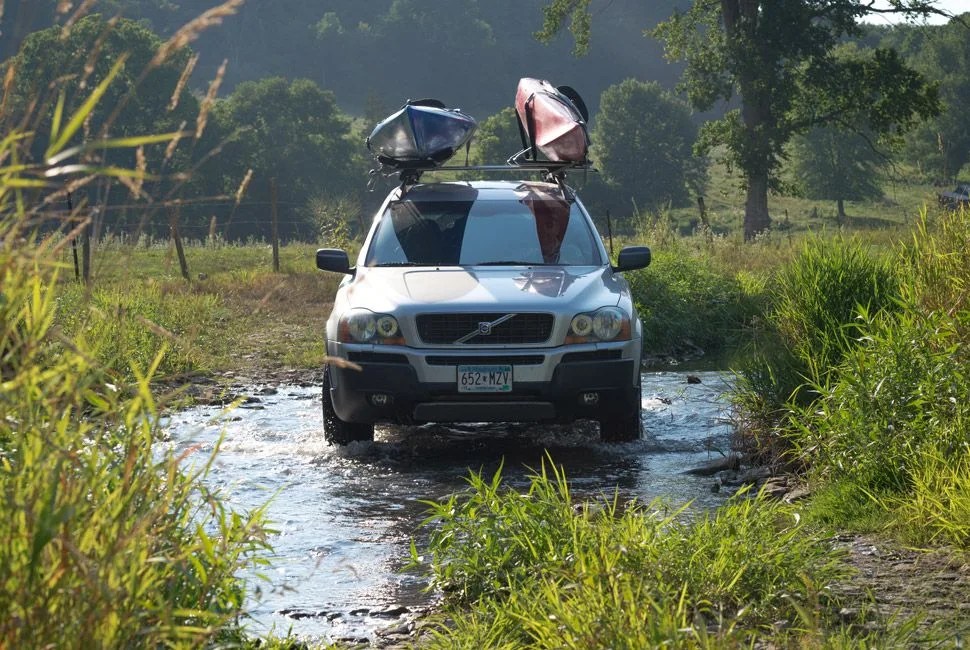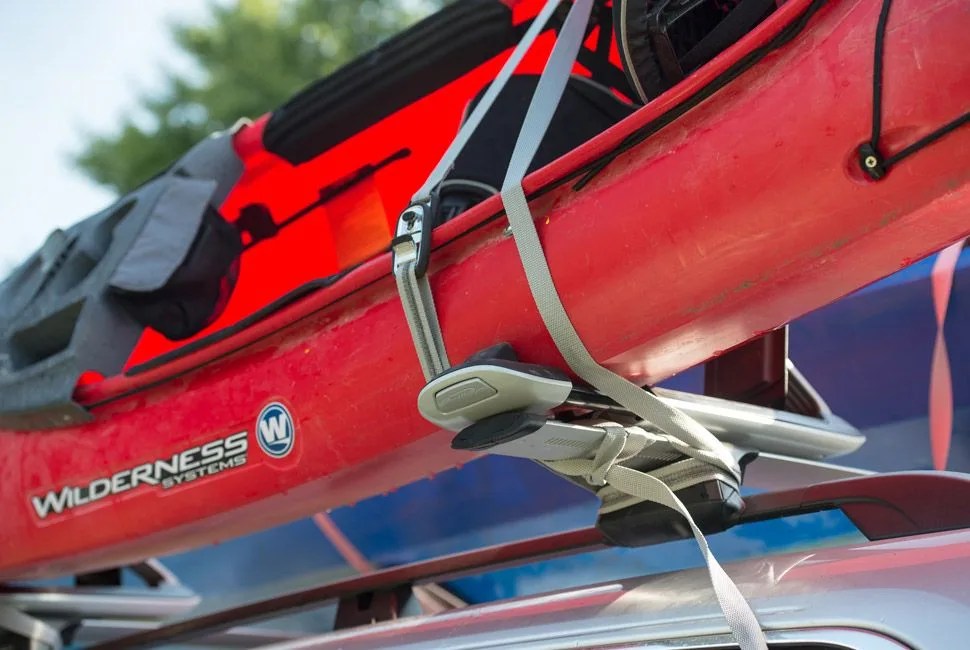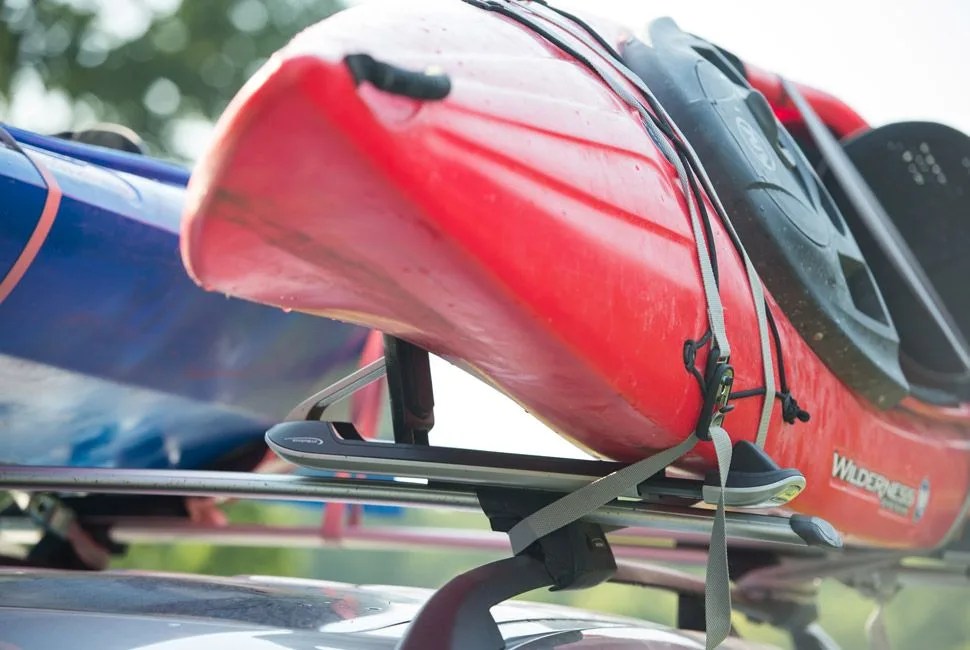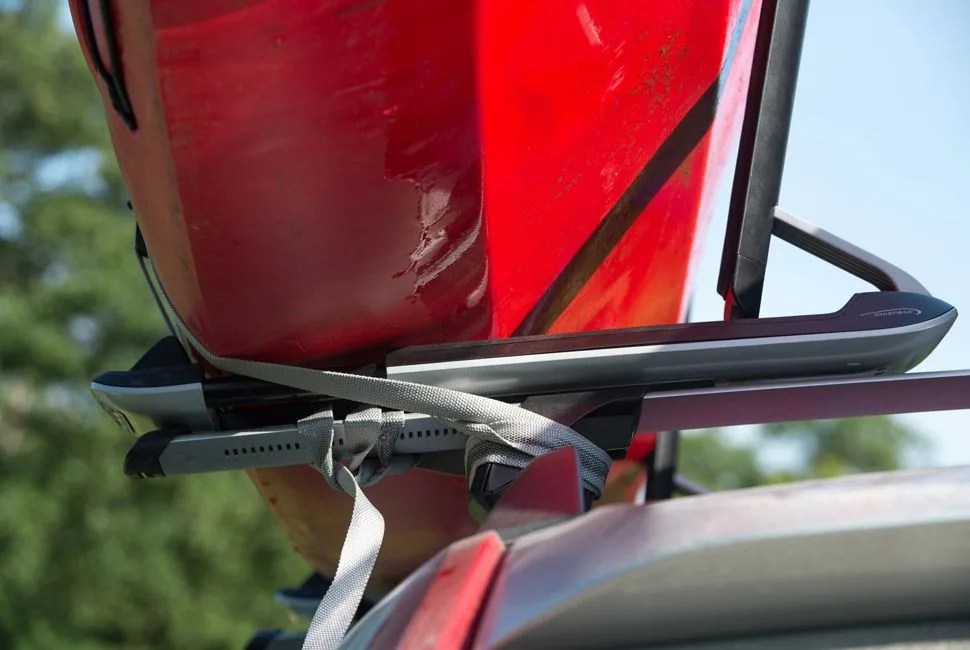4 photos
Roof rack systems, despite their utility, represent a tradeoff. For all the boats, bikes and skis you can haul, you’ll have to kiss your sunroof goodbye; even bare, those crossbars whistle on a Sunday drive and howl like jet engines on the highway. Not to mention they’re often difficult to use; one too many frustrated afternoons spent struggling with a kayak can turn an expensive rack fairing into little more than a space for your sticker collection.
Yakima, who has dealt in car racks for 35 years, claims their Whispbar ($399) is different — that it’s the quietest rack system available, a seamless extension of the vehicle, and more functional than the competitors. Breaking the mold that’s been defined by square and round bars for years, Whispbar uses aerodynamic crossbars shaped much like an airplane wing, rounded at the front and tapering to a point at the back. During a month of hauling kayaks atop a Volvo XC90, the Whispbar proved truly innovative and escaped many of the pitfalls found in other carrying racks.
MORE CARRYING CAPACITY: Best Day Packs of 2014 | Best Hard Shell Suitcases | Behind the Wheel of a Sportsmobile Custom Van
First up: the noise test. Like other rack systems, Whispbars are sold with “fit kits” for specific vehicles or for factory-standard rails. Mounting the wider Through-Bars ($449), necessary for hauling boats, was a slightly arduous process, but a rewarding one once we got on the road. With the sunroof slid open, there was virtually no noise coming from the bar. After merging onto the highway, there was wind noise, but not much more than you’d expect at 60 miles per hour with the roof open; conversations could be heard and the radio volume didn’t need to be adjusted.
While you can tie a load of lumber or (cringe) a mattress to your crossbars, at the end of the day, the Whispbar’s main focus is serving as a mounting base for components that carry specific gear, like boats, bikes and skis. Yakima has two kayak-carrying accessories: J-cradles ($299) and saddles ($299). The kayak components are so easy to attach that it took no more than one minute to fit all four pieces onto the bars. There are no thumbscrews or finicky brackets or clips. Each piece sits atop the bar and, with a twist of the levers, locks into a central channel. Both the J-cradles and the saddles fold flat when not in use, again without tools, so when you’re not carrying boats, they ride almost flush with the bars instead of sticking up in the wind, waiting to hit your garage door or a parking ramp. And while rack components typically add wind resistance and noise, the Whispbar remains worthy of its name. That said, given how easy they are to remove, there’s no reason to leave components on the rack if you’re not using them.
With the sunroof slid open, there was virtually no noise coming from the bar.




